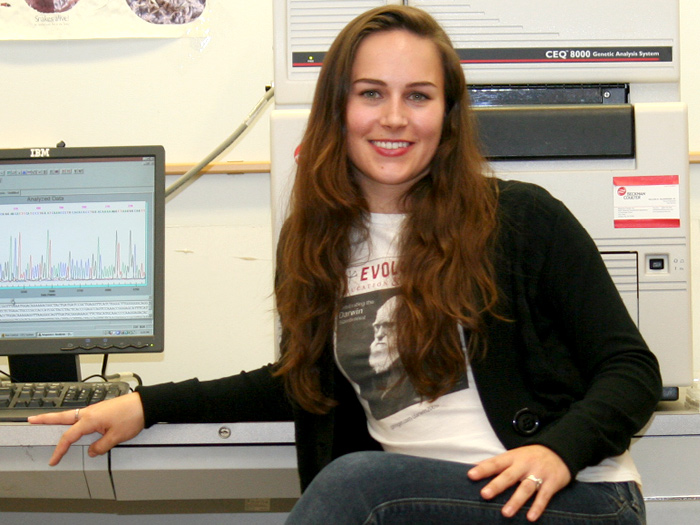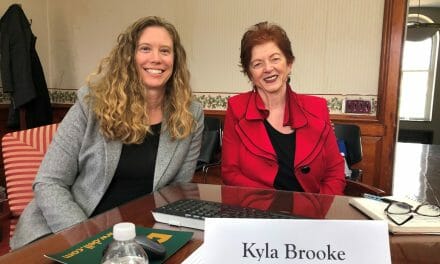Sara Ruane, who has been working toward her PhD in Biology Professor Frank Burbrink’s lab since 2007, has been named a Graduate Women in Science Fellow. Ruane explains that Women in Science is “a nonprofit organization that specifically gives awards to women in science as an underrepresented minority.”
This honor follows Ruane’s two other awards during her tenure at CSI, the 2009 Theodore Roosevelt Memorial Fund from the American Museum of Natural History and a 2008 Explorers Club Grant.
In discussing her work at CSI, so far, Ruane says, “I have been in the lab the shortest amount of time [compared to Burbrink’s other PhD students], and I’ve previously traveled with Frank, doing research with him, done some fieldwork with him, and I decided that this lab would be a good fit, as far as having freedom to work on your project and take it in different directions, and being able to collaborate with other people.”
As for the focus of her research, Ruane says, “Initially what I specifically started working on was the
phylogeography of milk snakes (Lampropeltis triangulum), which are found across North America, but this particular species has the largest range from Southern Canada down across the United States, down through Mexico, and all the way down into Ecuador and Venezuela. These guys have been divided up into 25 subspecies. It turned out that it’s not just one big species with 25 subspecies, or even a monophyletic group (a group that is most closely related to each other than other species of snakes). It turns out that there are actually multiple species within the milk snake complex; some of them are more closely related to others within the same genus rather than to other milk snakes. So, I took a different turn. It’s not really phylogeography because these guys aren’t what we’d call sister taxa, they’re not each others’ closest relatives; it’s more about phylogenetics, establishing what is a species, what isn’t.
Ruane reports that she decided to make these determinations based not upon an examination of just one gene (the mitochondrial gene cytochrome b), but by looking at various types of multiple genes with the hope of plotting the genes’ histories for these snakes to build a species tree “because I want to have an overall idea of the snakes’ evolutionary history and not just the history of one particular gene.”
Looking ahead to what she wants to pursue after she receives her PhD, Ruane says, “Ideally what I want to be doing is catching snakes and I’d love to do it in a lot of other countries. As of now, I’ve been to Mexico, Madagascar, and Australia, although I didn’t see any snakes in Australia. As far as jobs go, I still have at least two years before I’m going to be finished. I’d like to do a post-doc for probably two years and then I’ll be applying for jobs either as a professor–hopefully a place where I can have graduate students, a big enough university that can support my research–or as a museum curator.

















